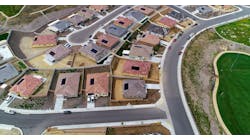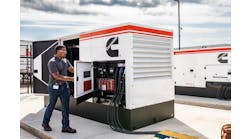Among the Coronavirus Pandemic’s Many Lessons for Businesses is a Greater Need for Energy Resilience
Matt Cinadr, Veolia principal engineer, project development, walks readers through a series of business lessons from the coronavirus that highlight the importance of energy resiliency in today’s climate.
The COVID-19 pandemic continues to provide businesses profound insight about how quickly their fortunes can change, and how they can be ready when the unthinkable happens.
Businesses and institutions are realizing that when disaster strikes, it is vital to have an energy system in place that offers flexibility and reliability. In a time of disaster, a resilient energy infrastructure is paramount. With the vast majority of the world’s population shuttered at home, the demand for oil and electricity has drastically decreased as businesses of all sizes are temporarily locked down.
Before the virus struck, the need for greater energy resilience was already changing the energy landscape; now the need is even more pronounced. More and more businesses and institutions are turning to microgrids to give them energy security and flexibility to prevent staggering losses in times of disaster, whether it’s a pandemic, earthquake or a devastating storm.
Microgrids, with their ability to integrate all types of distributed resources, storage and energy management technologies, present businesses and institutions with more useful and cost-effective models with a wider range of applications.
As microgrids continue to gain traction, they are increasingly evolving to meet regulatory hurdles in the distributed resource arena. This has paved the way for new business models that are transforming the industry. A variety of factors are contributing to this transformation — decarbonization, electrification, declining costs for renewables and storage and an evolving supply mix.
With the world economy undergoing a remarkable pause and as essential services redefine their continuity plans, now is the time to consider essential energy requirements and energy infrastructure. Why? Because it will allow businesses to better adjust to changes in demand, especially in a time like this.
You can’t manage what you don’t measure
Delivering energy efficiently is challenging enough, but it is increasingly hard if you don’t know your baseline requirements, and how that demand changes in different circumstances. The efficiency, reliability and economics of a given power supply change under varying loads. The ongoing COVID-19 pandemic has made that clear for countless businesses in the U.S. and across the world. Consumer energy demand is uncertain during this great pause and particularly as we recover to a new normal. Utility and grid operators are questioning when and where system peaks will occur and whether or not load relief will be available.
But the pandemic has also provided a rare opportunity for businesses to take a step back from day-to-day operations and priorities, and assess their energy requirements and how they are connected to the greater energy infrastructure. Understanding and managing demand will lead to the right supply-side solution. For many businesses, that solution involves the resilience, efficiency and sustainability that comes from a microgrid.
Once the current pandemic runs its course, businesses with these assessments will be well-suited to reopen knowing their energy systems have been optimized for operational performance.
A proper assessment of a business’s energy needs shows the baseline demand and the reliability of the supply. A team of specialists can determine these metrics using a sophisticated energy master planning program to optimize operational performance. The result is accessible and readable real-time information, better knowledge and traceable business indicators. Such assessments also offer faster drift identification, tailor-made answers, proposals for effective corrective solutions and advice for future development.
Once the current pandemic runs its course, businesses with these assessments will be well-suited to reopen knowing their energy systems have been optimized for operational performance. An energy master plan will address the variety of economic recovery and energy demand conditions that lie ahead. If we return to pre-COVID-19 levels, or an expansion where energy demand temporarily increases, or reduced consumption levels remain, a scalable microgrid may be the solution for your business.
A case in point showing the resiliency of microgrids can be found in New York City. A major medical center reaped the benefits of microgrid technology during the devastating Superstorm Sandy of 2012. While other hospitals couldn’t provide critical medical services due to citywide power outages, this hospital remained in operation because its microgrid continued to generate power independently of the utility grid.
As we all know, Superstorm Sandy was not an aberration. The world’s changing environment has unleashed an increasing number of intense storms and other natural disasters like the earthquakes that recently devastated Puerto Rico. As we emerge through the current health crisis, we can be certain that energy end-users’ interest in alternative service models such as microgrids and their ability to enhance local self-reliance, environmental quality, and economic health will be on the rise.
These types of essential services are critical to the nation’s ability to recover from devastating crises like the COVID-19 pandemic. Microgrids offer a solution that can minimize these risks and disruptions, and set businesses up for greater efficiency, resilience and sustainability when the crisis lifts.
Matt Cinadr is the principal engineer, project development, at Veolia.







